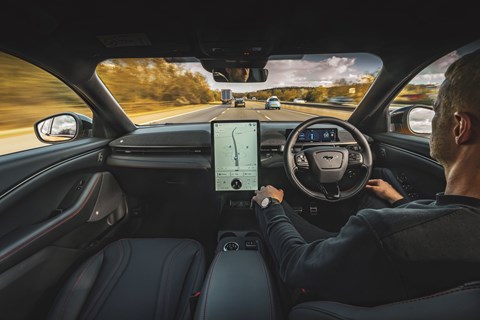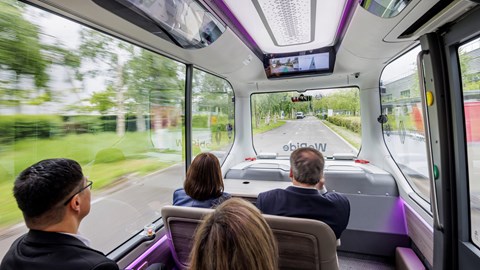► Renault halts self-driving passenger cars
► Autonomous cars too expensive, says Renault
► Switches focus to self-driving minibuses
Renault will not push its self-driving cars past Level 2 as it’s too expensive and customers don’t want them, the firm has said.
Speaking at an event at its R&D Technocentre just outside of Paris, the firm said it will restrict developing autonomous vehicles to public transport where there is greater demand and need.
It means, unlike firms such as BMW and Mercedes which are developing full self-driving cars on the road, it will restrict its cars to always having an ‘eyes-on-the-road’ principle.
What’s the reasoning behind not making self-driving vehicles?
There are two main factors that Renault gives as reasons for not developing autonomous cars for the general public. The first is complexity and the associated cost, and the second is that normal consumers don’t want the tech, it says.
Gilles Le Borgne, chief technical officer of the Renault Group, said: ‘Our analysis today is that we don’t want to invest [in autonomous tech] because it’s too costly an it will be difficult for our customers to afford that kind of features. When we do the analysis of our customer needs, 90 per cent say they are fulfilled with Level 2 [when the driver is still in control].’

Renault says that it will be premium manufacturers such as BMW and Mercedes that will be the ones that can justify the cost of self-driving features for their customers.
What do the different levels of autonomous driving mean?
It’s important to know the difference between the pre-defined ‘Levels’ of self-driving cars. These range from Level 0 where there is no automation to Level 5, which is full automation.
The switchover to autonomy stars to happen between Level 2 and Level 3. Le Borgne said there was a clear line between L2 and L3, as it meant a ‘driver shedding responsibility’ to the manufacturer.

Le Borgne said: ‘We want to keep and to stay at this side of the line because for the L3 we need to share responsibility between user and OEMs and to be fully safe, you need the ability level to be very high. You need more complex sensors, lidars and radars to be able to drive in any conditions.’
Level 2 is where most manufacturers are currently at and includes various computers taking over many of the car’s controls (braking, steering, accelerating and even parking) but the human is still hands-on at all times. These are already available on Renaults, including the new electric Scenic, pictured above.
Find out more about the the autonomous car levels
Will it put Renault behind the opposition when it comes to self-driving cars?
Renault is confident its new approach to limit autonomous functions on a car will not set it back as it quotes its statistics that the majority of customers currently don’t want full self-driving tech on their cars.
However, it says that the ‘architecture of its vehicles can evolve towards the autonomous car if expectations, regulations, or the cost of technologies make this breakthrough possible’.
How will it develop self-driving public transport?
While Renault might have cast aside self-driving cars, it thinks its Level 4 tech (full self-driving but in restricted zones) has a place for public transportation.
Regulations in France and Germany already permit self-driving road transport, and says it will have autonomous minibuses on the roads by 2026. Through Renault’s software arm, it has worked with autonomous tech firm WeRide to develop autonomous vehicle in Asia, the Middle East and North America.
Does the autonomous tech work?
On a visit to Renault’s Technocentre, I got a chance to travel around a pre-defined route in the autonomous minibus. Though it says future vehicles will be able to travel 70km/h, these vehicles are restricted to 30km/h, and in certain areas they are geofenced to slower speeds.
The vehicle is currently based on a WeMove platform, but future minibuses will be based on Renault’s new Master van, which has been engineered specifically for this sort of use as a consideration.

It’s a large glass box on wheels with seating for around 12 passengers, and though there’s a co-pilot on board, he’s labelled as a ‘safety supervisor’ and doesn’t have any control other than a big red emergency stop button. Both reassuring and not at the same time.
It’s my first time in a fully self-driving vehicle on roads and there’s still a slight trepidation at moving with no driver. But you soon sit back and relax, it’s smooth and despite several badly parked cars and rogue pedestrians on our small loop, all are negotiated with ease.
Renault will be trialling the autonomous minibuses as shuttles at this month’s Roland-Garros tennis tournament to demonstrate the service, ferrying passengers between a designated car park and the main stadium.